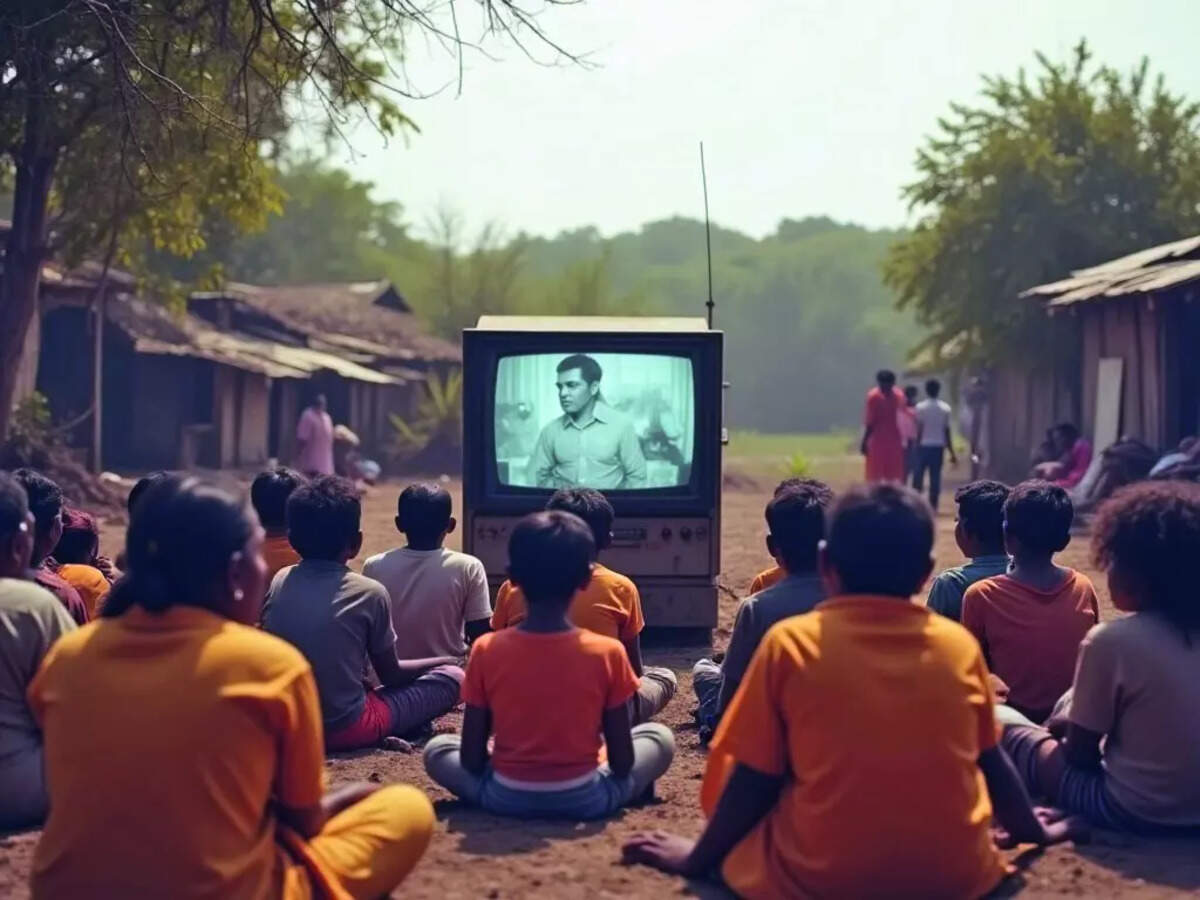Space has, once again, captured the imagination of people around the world. India, too, has seen a resurgence of interest in space, most recently through Shubhanshu Shukla‘s mission to International Space Station (ISS). However, the glamour and media coverage are mainly restricted to such missions, and are missing for programmes of technology applications.
Yet, it is the applications that justify the investments in space, especially for a developing country like India with so many alternative demands on resources. It is for this reason that India was a pioneer in the use of space tech for societal benefit. This year marks the 50th anniversary of a global milestone in this area.
It was on August 1, 1975, that the Satellite Instructional Television Experiment (SITE) began, with its first broadcast. A collaborative India-US effort, SITE took educational and development TV programmes to specially installed community TV receivers in about 2,400 villages in six states. Programmes, beamed up to Nasa’s ATS-6 satellite from Earth stations in Ahmedabad and Delhi, were received in these villages through a 10-ft diameter antenna and an electronic converter – a precursor to DTH (direct-to-home).
The six states were selected keeping in mind India’s diversity. And, within them, the most backward districts were chosen. The villages were often remote and included, in Orissa, unelectrified villages where TV sets were operated on batteries. TV sets, for community viewing, were installed in schools or panchayat ghars where all – irrespective of caste and class – had free access.
A young team, led by a few stalwarts like SITE programme manager E V Chitnis – who turns 100 today – worked with passion and deep commitment. Engineers ensured that TV sets in remote villages were maintained so well that their downtime was lower than those in urban homes.
Social scientists visited these villages – some lived there for 15 months – to research the impact. Programme-makers, almost all fresh graduates from Film and Television Institute (FTII), Pune, were recruited by Isro to make the science education programmes, while Doordarshan set up special studios to make programmes specifically for each state.
Local language, area-specific broadcasts took the latest agricultural practices to farmers in SITE villages. Education programmes for primary school children aimed at the ‘enrichment’ of classroom teaching. A special teacher training programme – in person and supported by TV broadcasts – conducted in partnership with NCERT and the education ministry, covered 45,000 teachers in two sessions. Apart from state-specific broadcasts, a common ‘national programme’ for 30 mins each day was beamed to all six states.
Concerned about the centralising potential of satellite broadcasting, SITE also included a decentralised set-up: India’s first district-level rural TV station in Kheda district (the home of Amul), Gujarat. This served as the model for expansion of TV through low-power transmitters (LPTs). The Kheda Communications Project was an experiment in participatory communication and won wide acclaim, including Unesco’s first Rural Communication Prize.
Hailed by Arthur Clarke as ‘the greatest communication experiment in history’, SITE drew worldwide recognition. As the first-ever large-scale use of direct broadcasting from a satellite, SITE took TV into the depths of rural India, reaching disadvantaged people even before TV reached most urban areas. While it lacked the heart-stopping drama of a rocket launch, or the heart-in-mouth climax of the last tragic moments of Chandrayaan-2, it had many heart-warming moments.
The awe, novelty and magic of seeing a moving picture come out of a box – most people in SITE villages had never been to a cinema – the excitement and spark in the eyes of children watching educational programmes: these moments will stay forever with those involved in SITE. Probably in the one year of SITE, we learned more than the villagers.
SITE embodied Vikram Sarabhai‘s vision for Isro, which was based on two primary strands: knowledge creation, and its use for practical benefit. The former, encompassing space science, began with cosmic ray research, using balloons and sounding rockets, and progressed to the Mars mission, the successful Chandrayaan landing and the solar observatory, Aditya.
Both strands were based on the philosophy of self-reliance where possible, and cooperation or collaboration where necessary. SITE exemplified this. All the ground hardware was designed, developed and made in India; the satellite and its launch were by the US. Today, India has moved many notches up with Nisar (Nasa-Isro Synthetic Aperture Radar) mission scheduled for launch on July 30.
Applications paced and dictated technology development, the latter not being a goal in itself. To be the ‘first’ or ‘fifth’ country to do something was never an objective, and vanity projects were shunned.
The articulation of this – which one hopes continues to be Isro’s north star – is best expressed in Sarabhai’s words: ‘…there is no ambiguity of purpose. We do not have the fantasy of competing with the economically advanced nations in the exploration of the moon or the planets or manned space-flight. But… if we are to play a meaningful role nationally, and in the community of nations, we must be second to none in the application of advanced technologies to the real problems of man and society.’ An apt reminder on SITE@50.
The writer worked in Isro for over 2 decades, and was deeply involved in SITE
